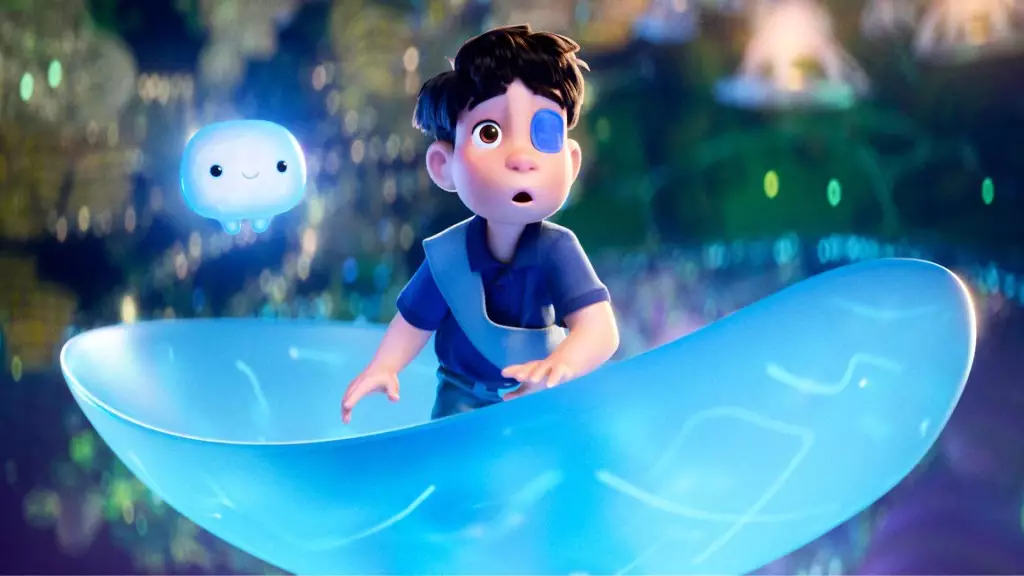Pixar’s latest release, “Elio,” has plummeted to an alarming new low, raking in a mere $21 million during its opening weekend. This abysmal figure marks it as the least successful debut in Pixar’s illustrious history, steering the studio into uncharted, turbulent waters. Despite basking in a positive reception from critics—holding a respectable 84% on Rotten Tomatoes—this animated feature symbolizes a stark and concerning trend in the film industry. It’s not hard to see why industry analysts are sounding the alarm; the gap between original animated content and sequels has widened significantly, leaving room for dire consequences.
Doug Creutz, an industry analyst at TD Cowan, has synthesized mounting concerns around animated films produced during and following the Covid pandemic. He aptly labels this disconnect as “enormously wide,” suggesting a shifting landscape in audience preferences. Many film executives are now navigating a minefield—the need to innovate and produce original intellectual properties (IPs) is at odds with the audience’s apparent affinity for familiar franchises. This trend is deeply troubling, especially considering that studios thrive on cultivating new hits to enrich their IP portfolios.
Setting a Dangerous Precedent
The implications of this trend extend beyond just the box office. Without a stable pipeline of original content, studios like Disney may find themselves shackled to reboots and sequels, ultimately stunting creative growth. The pressure from investors is palpable, as evidenced by Disney’s stock fluctuation directly following “Elio”’s disappointing debut. While the company’s shares dipped slightly at first, they later rebounded; however, the underlying anxiety about Disney’s reliance on its cherished animated franchises remains.
Bob Iger’s leadership faces scrutiny as investors and shareholders demand results, particularly in the face of a turbulent theme park market. The lifeblood of Disney parks—new attractions based on fresh properties—may dwindle as studios lean heavily on sequels that do not provide the creative foundations necessary for invigorating their theme parks. It raises the haunting question: what happens when audiences tire of the same old stories?
Box Office Figures Tell a Grim Tale
The statistics tell a story we cannot ignore. Creutz identifies a troubling disparity in performance metrics, highlighting that original animated films from Disney and Universal have averaged a haul of $412 million since 2022. To contrast, sequels consistently bring in a staggering $844 million on average. The figures suggest that studios are incentivized to eschew original storytelling in favor of cashing in on established franchises—a shift that poses long-term risks for creative innovation in the animation space.
The situation cries out for introspection. The industry seems at a crossroads; its survival may depend on the ability to revive the allure of originality. Instead, audiences are relegating fresh ideas to the periphery while flocking to the comfort of sequels. A prime example of this frustration can be seen in the remarkable success of films like “Inside Out 2” and “Moana 2,” which indicate a consumer base invested in nostalgia rather than new narratives.
The Future of Animation
Looking ahead, the future of animated films appears precarious. Will studios heed the call for innovation, or will they continue down this slippery slope of sequels and franchises? The hard truth is that the film industry needs to reclaim its commitment to generating original property. With competition from streaming platforms intensifying, an over-reliance on well-worn narratives could erode the very foundation that supports both animated storytelling and audience engagement.
Restoring faith in original animated films is essential not only for the integrity of the animation medium but also for the sustainable growth of studios dependent on a diversified IP portfolio. As we analyze the failures of “Elio,” it becomes crucial for industry leaders to confront the stark realities shaping audience preferences and invest in revitalizing original concepts—before it’s too late. The clock is ticking, and the stakes have never been higher.

